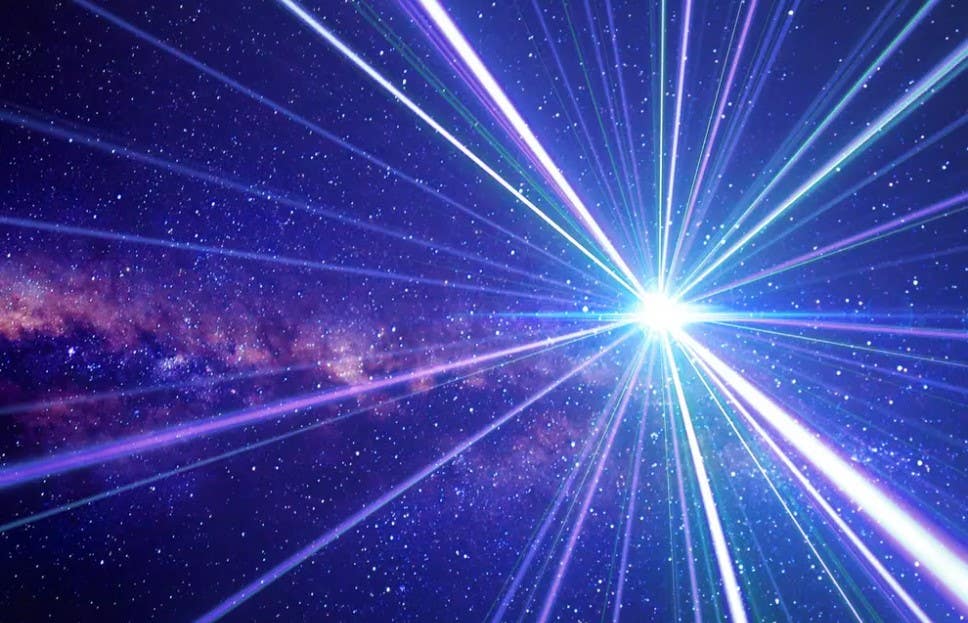NASA scientists believe that warp drive is possible
Of many remarkable events shown in Star Trek, warp drive was one of the many futuristic ideas that caught the attention of many people.

[Dec. 12, 2022: Staff Writer, The Brighter Side of News]
Warp drive was the very first theory proposed in Star Trek, allowing it to travel faster than light across the galaxy. (CREDIT: Creative Commons)
Ever since the Sci-fi TV series Star Trek telecast, the show has left people baffled with thousands of questions.
The science fiction series has always been intertwined between real-life science since the past decades. It has inspired technologies that people use daily.
Of many remarkable events shown in the series, warp drive was one of the many futuristic ideas that caught the attention of many people across the globe. In fact, it was the very first theory proposed in Star Trek, allowing it to travel faster than light across the galaxy. Thus, opposing Einstein’s Theory of Relativity – prevents anything from moving faster than light.
Miguel Alcubierre, a theoretical physicist in 1994 developed a theory called the Alcubierre drive. He created a bubble within space-time that would twist distances making it possible for anything to travel long distances within the bubble. Most people thought this made perfect theoretical sense, but practically it wasn’t workable.
A ring-shaped warp drive device could transport a football-shape starship (center) to effective speeds faster than light. The concept was first proposed by Mexican physicist Miguel Alcubierre. (CREDIT: Harold White)
Related Stories:
However, to prove them wrong, Joseph Agnew, an undergrad from the University of Alabama wanted to test the theory. Joseph says, “Mathematically if you fulfill all the energy requirements, they can’t prove that it doesn’t work.” “Suppose you have a craft that’s in the bubble,” he continues, quoted in a university press release on the talk. “What you would do is, you’d compress space-time ahead of the craft and expand space-time behind it.”
The Alcubierre Warp Drive Model. The blue area below the plane represents contracted space while red and raised area represent expanded space. (CREDIT: Harold White)
But don’t you think Einstein’s theory of relativity throws a wrench into the whole thing since there’s nothing that can travel faster than the speed of light. As such, when an object travels faster, they tend to get heavier. And the heavier they get, the harder it is to achieve acceleration. In short, it is not at all possible to get to the speed of light.
But what is warp drive?
Arguably, warp drive is said to be the holy grail of space exploration. It is said to possess the capability of having a propulsion system that can travel faster than light speed travel. With this, don’t you think it will be possible for humans to reach any corner of the galaxy whenever they want?
Considering Einstein’s Theory of Relativity, it sure does look it will be highly impossible to break the concept. But will it?
Most of the science fiction writers have given us hopes with many images of the interstellar travel, but traveling at the light of speed is absurd.
We all know, nothing could travel faster than light as the theory by Einstein explains. The reason being, because it takes an infinite amount of energy to accelerate any object to mass up to the speed of light. The only reason why light does not get affected by the fact that photons (i.e. the particles of light) do not have any mass. As a result, any spacecraft traveling at the speed of light is highly impossible.
However, there are two loopholes here:
If we’re speaking of finding the odds of traveling to the light of speed, it simply means we are speaking about the propulsion of objects.
No prohibition mentions traveling as close as it is possible to lightspeed.
Is warp drive even possible?
Perhaps by bending the laws of physics, it might likely be possible to break the universal speed limit. This is where the theory “Alcubierre warp drive” was proposed. Instead of beating the speed of light, it might be possible for the Alcubierre warp drive to go around the speed of light by warping space-time, just like in the series ‘Star Trek.’
Based on the theory, the traveling spaceship sits within the warp bubble surrounded by a ring of negative mass. The ring of negative mass will help shrink space-time before the spaceship and stretch space-time behind the spaceship. Doing so will allow the spaceship to travel ten times the speed of light. Even so, within the bubble, the spacecraft will maintain the universal speed limit while the general relativity remains intact.
Although there might be a small problem here, this would require a large amount of mass-energy to make the warp drive function. To propel the spacecraft at such as level, you would need the mass equivalent to that of Jupiter.
Consider Einstein’s equation here, E=mc2. Don’t you think it is an enormous amount of energy you would need, even more than the universe will ever be able to provide?
What’s the catch?
Dr. Harold Sonny White, a NASA mechanical engineer, and physicist is still trying to find ways to solve the mass-energy that is required. He believes by bending ways in physics, it is likely possible to bring down the mass-energy requirement mentioned in the Alcubierre theory. He also suggested there might be slight possibilities to change the shape of the ring of the negative mass to enable mass requirement of about 700kg.
Star ship Enterprise traveling at warp speed. (CREDIT: Star Trek)
White is now leading a team of physicists and engineers in NASA to build the White-Juday Warp Field Interferometer. It is a beam splitting interferometer which can easily detect and generate the tiniest warp bubble. Perhaps this might not instantly get you over to Andromeda Galaxy, but eventually, you’ll get there when needed.
Though significant, we’re still a long way before interstellar travel and warp drive becomes a reality. However, with advancements in technology, the answers we’re looking for might be close enough.
According to Star Trek, warp drive was invented in 2063.
Note: Materials provided above by The Brighter Side of News. Content may be edited for style and length.
Like these kind of feel good stories? Get the Brighter Side of News' newsletter.
Joseph Shavit
Head Science News Writer | Communicating Innovation & Discovery
Based in Los Angeles, Joseph Shavit is an accomplished science journalist, head science news writer and co-founder at The Brighter Side of News, where he translates cutting-edge discoveries into compelling stories for a broad audience. With a strong background spanning science, business, product management, media leadership, and entrepreneurship, Joseph brings a unique perspective to science communication. His expertise allows him to uncover the intersection of technological advancements and market potential, shedding light on how groundbreaking research evolves into transformative products and industries.



